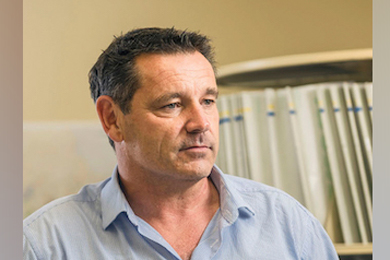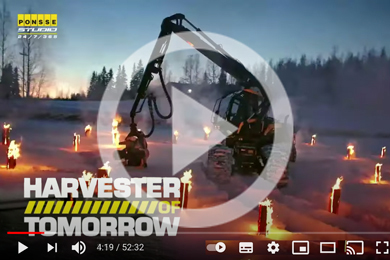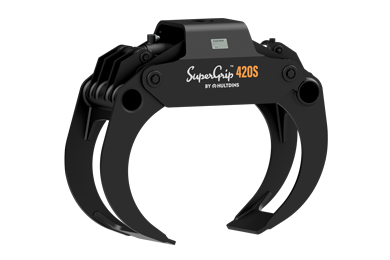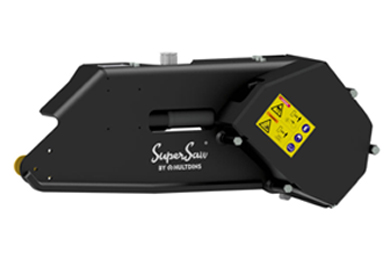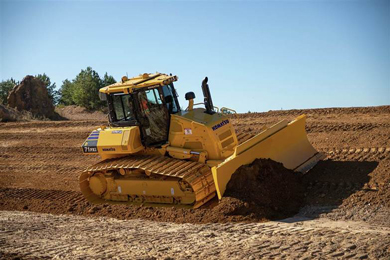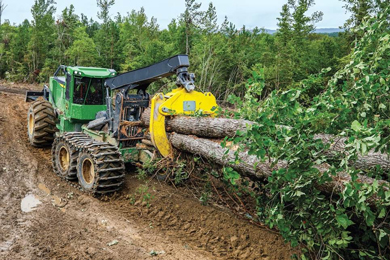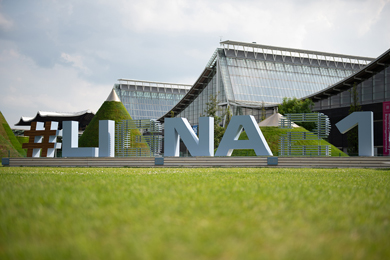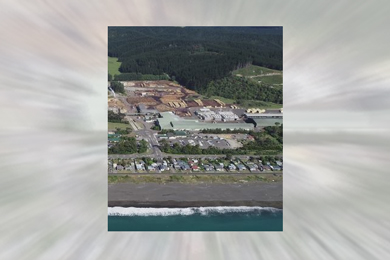Metsä Fibre, part of Metsä Group, has made the investment decision to build a new bioproduct mill in Kemi, Finland. The value of the investment is EUR 1.6 billion and it is the largest investment ever made by the Finnish forest industry in Finland. The construction phase will take approximately two and a half years, and the mill will be completed during the third quarter of 2023.
In addition to the Kemi bioproduct mill, Metsä Group is currently building the world’s most modern sawmill in Rauma, Finland. With these investments, Metsä Group meets the needs of forest owners and its customers even better than before across the entire forest industry value chain and will play a significant role in combating climate change.
“The role of Finnish forests from an ecological, economic and social point of view is important in our development work. We are constantly improving methods of managing commercial forests to safeguard biodiversity and increase the positive climate impact of forests. Vibrant forestry brings prosperity to the whole country. We make products for people’s everyday lives from Finnish wood. Metsä Group’s strategic goals include increasing the value of Finnish forests, profitable growth together with customers, increasing the production of wood products which store carbon for a long time, replacing products made of fossil-based raw materials with wood-based products, discontinuing the use of fossil fuels and increasing the production of renewable energy. Rauma sawmill and Kemi bioproduct mill contribute to all these goals,” says Ilkka Hämälä, President and CEO of Metsä Group.
Significant positive economic impacts for the whole of Finland
Kemi bioproduct mill will increase the annual value of Finland’s exports by approximately EUR 0.5 billion, and the positive annual income effect in Finland from wood sales and domestic purchases will also be approximately EUR 0.5 billion. The new bioproduct mill will secure the 250 jobs in the existing pulp mill in Kemi for decades to come. All in all, around 500 persons work in the Metsä Group’s Kemi mill site.
A significant part of the pulp produced at the Kemi bioproduct mill is processed into high-quality linerboard at the mill site at Metsä Board’s mill. In this connection, Metsä Board has decided to increase the capacity of the linerboard mill. The Kemi bioproduct mill will create around 1,500 new jobs across its entire direct value chain in Finland, most of them in wood sourcing. All in all, approximately 2,500 people will work in the direct value chain of the Kemi bioproduct mill in Finland.
The Finnish companies have been competitive, and the Kemi bioproduct mill project’s degree of Finnish origin is estimated to be very high, approximately 70%. During the construction phase, the employment impact will be nearly 10,000 person-years and more than half of it will be located in Kemi. The number of individual persons working in the mill area during the construction phase is estimated to be around 15,000.
“The large project will have significant positive impacts on Kemi region and the whole country. In the supplementary budget for 2020, the Finnish government has allocated funding for investments in the Northern Finland transport network. The commitment of the public sector to infrastructure development that supports the mill operations is very important. We are pleased with the active and open dialogue with ministers, officials and other stakeholders during project’s pre-engineering. In this challenging situation Finland needs responsible investments to bring faith in the future,” Hämälä continues.
The ecological sustainability program ensures even more responsible wood procurement
Wood required by the mill will be procured from sustainably managed forests, and the origin of the wood is always known. The Kemi bioproduct mill will use approximately 7.6 million cubic metres of pulpwood a year, which is 4.5 million cubic metres more than the current pulp mill in Kemi. Wood is planned to be procured mainly from Finland. The availability of high-quality wood raw material is supported by the strong owner base of Metsäliitto Cooperative. The wood procurement to Kemi mill will expand to Sweden in the future, from where it is estimated that approximately one million cubic meters of wood will be procured annually.
Metsä Group wants to be a forerunner in responsible wood procurement. With the ongoing ecological sustainability programme, Metsä Group takes various measures to enhance the growth and carbon sequestration of forests, safeguards the biodiversity of forest nature and improves water protection associated with forestry work. The new bioproduct mill in Kemi will increase the supply of wood from peatlands. Acting correctly for the climate and growth of trees in peatlands requires special expertise, and the role of continuous cover forest management will increase.
Metsä Group’s unique bioproduct mill concept
The way Metsä Fibre, part of Metsä Group, renews its mills is based on the company’s unique bioproduct mill concept, the core of which is the resource-wise use of the wood raw material and side streams of production. In the concept, the renewable wood raw material and production side streams are used in full as different bioproducts, thus replacing fossil-based materials and fossil fuels. The first totally new mill using the concept is the Äänekoski bioproduct mill that was started in 2017.
The Kemi bioproduct mill will produce some 1.5 million tonnes of softwood and hardwood pulp per year, as well as many other bioproducts. It will also produce 2.0 TWh of renewable electricity per year, which equals to roughly 2,5 percent of Finnish total electricity production and together with Äänekoski bioproduct mill roughly 5 per cent. The new mill will replace the current pulp mill in Kemi, which has reached the end of its lifespan. An impairment loss of approximately EUR 42 million is expected to be recorded on the assets of the Kemi’s current pulp mill as an item affecting comparability in the first quarter of 2021.
“The demand for Nordic softwood pulp continues to grow globally. With the new bioproduct mill in Kemi we will be an even stronger partner for the sustainable growth of our customers. The Kemi bioproduct mill is a global leader in environmental, energy and material efficiency. The mill will also create the basis for development of a local industrial ecosystem with new bioproducts and partnerships, as has been the case in Äänekoski. No fossil fuels will be needed in production, and renewable energy in the form of electricity, wood-based fuels and heat will be sold from the mill to external customers,” says Ismo Nousiainen, CEO of Metsä Fibre.
The Kemi bioproduct mill will be built using the best available technology. The technological level meets and even exceeds the EU BREF requirements. Despite the clearly increased production compared with the current Kemi pulp mill, the new bioproduct mill will stay below the emission limits of the current environmental permit of the existing mill. The environmental impacts will be minimised, and noise control, for example, has already been taken into consideration during the pre-engineering phase, both regarding construction and production of the mill. The Regional State Administrative Agency for Northern Finland granted the environmental and water supply permits to the Kemi bioproduct mill in December 2020.
The main partners for the construction project are Valmet, ABB, AFRY and Fimpec. The project will be implemented as buyer-driven subcontracting, which also allows for the participation of smaller companies. For local businesses, the mill investment will create demand directly related to the mill construction. In addition, the services used by the people working for the project will significantly increase the demand for services in the Kemi region.
“We have worked systematically and the bioproduct mill project has progressed according to plan. The mill site has been prepared for construction work, pre-engineering of the entire project has progressed well. We want the best professionals in each field as our partners. We require commitment to safety, prevention of grey economy, high-quality and schedules. Implementing the bioproduct mill project also requires local businesses and employees from the Kemi economic area for various tasks, such as civil engineering and installation work and the provision of services and commodities,” says Jari-Pekka Johansson, Director of the bioproduct mill project at Metsä Fibre.
Financing on solid ground
Of the total investment to the Kemi bioproduct mill, EUR 1.6 billion, 40% will be financed with domestic equity and 60% with debt financing. The debt financing primarily consists of EUR 500 million 10 year-loan guaranteed by Finnvera with an 80% risk share, EUR 200 million 10-year loan guaranteed by the Swedish Eksportkreditnämnd (EKN) with a 95% risk share, EUR 200 million 15-year loan by the European Investment Bank (EIB) and EUR 100 million five-year Green Term Loan with eight commercial banks. In addition, Metsä Fibre has renewed the EUR 200 million revolving credit facility (RCF) maturing in June 2021 with a similar and five-year arrangement, the financing margin of which is tied to the company’s key sustainability indicators.
For further information and interview requests, please contact:
Juha Laine, Senior Vice President, Communications, Metsä Group, juha.laine@metsagroup.com, tel. +358 10 465 4541
Metsä Fibre
Metsä Fibre is a leading producer of bioproducts, biochemicals and bioenergy. Metsä Fibre is the world’s leading producer of bleached softwood pulp and a major producer of sawn timber. Currently employing approximately 1,300 people, the company’s sales in 2019 totalled EUR 2.2 billion. Metsä Fibre is part of Metsä Group.
Follow Metsä Fibre: Twitter LinkedIn
Metsä Group
Metsä Group is a forerunner in sustainable bioeconomy utilising renewable wood from sustainably managed northern forests. Metsä Group focuses on wood supply and forest services, wood products, pulp, fresh fibre paperboards and tissue and greaseproof papers.
In 2019, Metsä Group’s sales totalled EUR 5.5 billion, and it employs approximately 9,300 people. Metsäliitto Cooperative is the parent company of Metsä Group and is owned by approximately 100,000 Finnish forest owners.
Source: Metsa Fibre
https://www.metsafibre.com/en/media/all-news/Pages/news.aspx?EncryptedId=C050715E3EA3C961&Title=MetsaGroupbuildsanewbioproductmillinKemi,Finland

